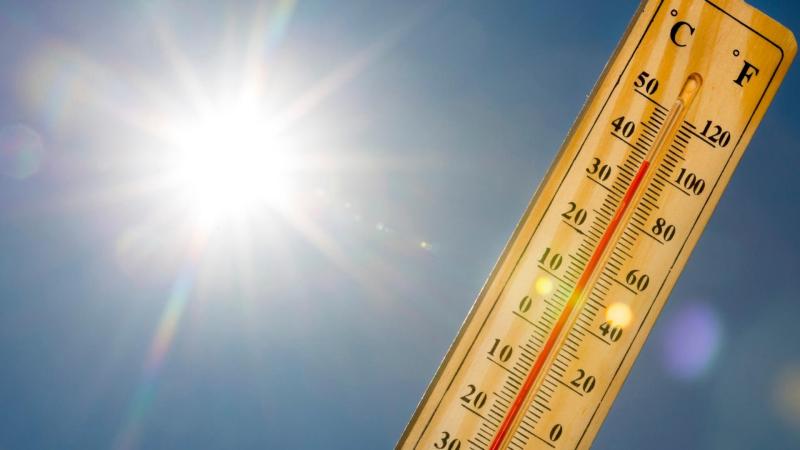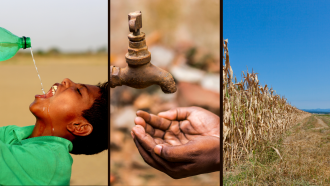
A recent assessment by the World Meteorological Organisation has declared heat waves as the deadliest extreme weather event in the years 2015–2019, causing more than 8,900 deaths globally. In May 2015, temperatures crossed 45°C in Odisha and Telangana in the fifth deadliest heat wave in history, with a death toll of 2,300. With 30% of the global population living in regions susceptible to 20 heat wave days in a year and the rising global temperatures, one can conclude that its toll will only increase in the years to come.
In such situations, warnings about impending heat waves can be lifesavers. However, very few studies have focused on such a prediction system to date, with none looking at real-time predictions. Now, researchers from the Indian Institute of Tropical Meteorology, Pune, in collaboration with those from the Indian Meteorological Department, New Delhi, Savitribai Phule University, Pune, and New York University, Abu Dhabi, have developed a prediction system to predict heat waves a couple of weeks in advance. The study, funded by the Ministry of Earth Sciences, Govt. of India, was published in the journal Scientific Reports.
By studying weather patterns that ultimately lead to heat waves, scientists can predict the onset, duration and demise of a heat wave. The prediction system designed by the scientists of the current study uses maximum temperature forecasts from a climate forecasting system developed by the National Centre for Environmental Prediction (NCEP). It then produces weekly predictions of heat waves that could occur in the summer months of March to June, when a heat wave is most likely to hit.
The researchers identified two heatwave-prone regions to build their systems based on temperature data from 1981–2017. The north-west region comprised of the states of Rajasthan, Punjab and Haryana and the south-east coastal region covered the states of Andhra Pradesh, Telangana and Orissa.
The researchers found that the heat waves over these two regions were related. At times, heat waves that develop over the north-west region move to the south-eastern coast. Hence, the study identified an area in the middle, covering Madhya Pradesh, Chhattisgarh and West Bengal, where the effect of the heat waves in the two regions is felt. The designed system can also effectively predict the possibility of heat waves in this region based on the conditions in the other two areas.
The prediction system looks for conditions that signal a heat wave day, based on the established heat wave criteria set by the Indian Meteorological Department. If the maximum temperature is greater than 44°C, the system considers it a heat wave day. Alternatively, if the maximum predicted temperature is higher than 43.7°C over the north-west region or is over 40.3°C in the south-east region, and the temperature deviates more than 3.5°C from the day's average temperature, it is regarded as a heat wave day.
The researchers tested their prediction system over the three regions using temperature data from the years 2003–2017. The system showed varying degrees of reliability for the different regions, The prediction system works better for the north-west region, where it can reliably predict a 70% chance of a heat wave two weeks before the event occurs. But, in the SW region, at two weeks it can only reliably predict a 50% chance of a heat wave. In general, this system works best to predict heat waves a week before they occur. The system also tends to over-forecast heat waves over both areas.
The researchers also found that the development of a heat wave over the north-west region has a higher link to the maximum temperature values. In the south-east region, the departure from the average temperature plays a more significant role. When they tested their system using data from the May 2015 heat wave, they found that it could predict the heat wave a week before its onset, which could have potentially saved many lives.
The prediction system is now handled by the Indian Meteorological Department, who will issue colour-coded warnings for heat waves. A green marks a typical day and red denotes extreme heat for the day and a heat wave persisting for more than six days. These warnings also appear on their website during the summer months. During these extreme heat conditions, people are advised to take certain precautions to avoid heatstroke. Staying indoors from 11:00 AM to 3:00 PM, not using electric fans when the temperatures are over 35°C in arid conditions, drinking water at frequent intervals and not eating protein-rich foods that increase metabolic heat are some of them.
Although the new prediction system only considers the maximum temperature values to make its prediction, the occurrence of heat waves depends on several other factors. Humidity, for example, not only influences the development of heat wave conditions but also affects the public. The researchers plan to incorporate humidity observations and additional statistical analysis to increase the accuracy of the predictions.






